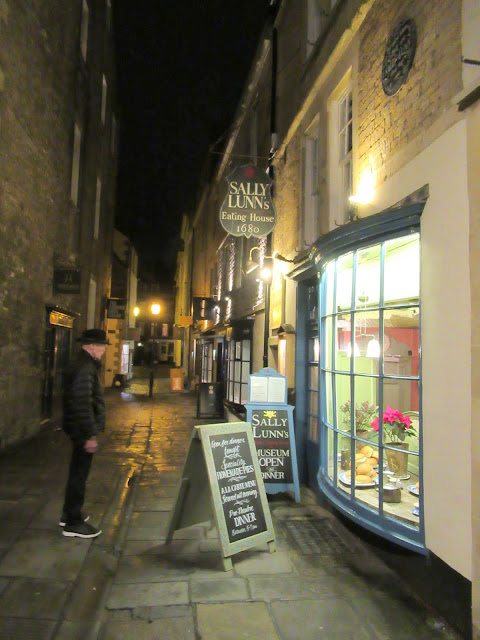We decided to go away the weekend before my operation, and Bath seemed a good choice.
The city became a spa with the Latin name Aquae Sulis (the waters of Sul) c. 60 AD when the Romans built baths and a temple in the valley of the River Avon, although hot springs were known even before then.
Many of the streets and squares were laid out by John Wood, the Elder, and in the 18th century the city became fashionable and the population grew. Jane Austen lived in Bath in the early 19th century.
This is the street where our hotel was situated, the Holburne Museum, the building at the end.
This is a typical Bath street, the buildings are made from the local, golden-coloured Bath stone, many dating from the 18th and 19th centuries. The dominant style of architecture is Georgian, a style that evolved from the Palladian revival style that became popular in the early 18th century. The original purpose of much of Bath's architecture is concealed by the honey-coloured classical facades; in an era before the advent of the luxury hotel, these apparently elegant residences were frequently purpose-built lodging houses, where visitors could hire a room, a floor, or, (according to their means) an entire house for the duration of their visit, and be waited on by the house's communal servants.
The entrance to our hotel.
One of the things I like about Bath is the fact that if you look beyond the end of most streets, you can see the hills in the distance. These limestone hills have been designated as an area of outstanding beauty.
The river Avon slices the city in two

Pulteney bridge is one of the landmarks, and it was very near our hotel
the weir is truly spectacular
The streets around the city centre were busy with shoppers
a cute building
The Royal Mineral Water Hospital
a few narrow lanes
Large, open squares
The Corridor, a shopping arcade
The Guildhall Market
The lanes around the Abbey and Baths


Sally Lunns restaurant, the oldest house in Bath

The Abbey, all lit up at night.
and during the day.
The Baths.
A bridge connecting two buildings
The park by Pulteney bridge
The Circus





























No comments:
Post a Comment